List of Polish nobility coats of arms images
Polish heraldry is closely related to the Polish nobility, the szlachta, which has its origins in Middle Ages warriors clans that provided military support to the King, Dukes or overlords.
Exceptions apart, all Polish families belonging to the same noble clan used/use the same coat of arms. Polish original word Herb makes reference to the clan as well to the coat of arms at the same time.
Polish heraldry
Some think the Polish clan does not mean consanguinity nor territoriality, as do the Scottish clan, but only membership in the same warrior group (or a brotherhood of Knights). For that reason, there are hundreds of different families in the same clan and all of them were/are entitled to use the same coat of arms. However, in regards to consanguinity, the matter is far from settled, and the question matters because of historiographical concern to discover the origins of the privileged status by membership in the knights' clan. In the year 1244, Bolesław, Duke of Masovia, identified members of the knights' clan as members of a genealogia:
"I received my good servitors [Raciborz and Albert] from the land of [Great] Poland, and from the clan [genealogia] called Jelito, with my well-disposed knowledge [i.e., consent and encouragement] and the cry [vocitatio], [that is], the godło, [by the name of] Nagody, and I established them in the said land of mine, Masovia, [on the military tenure described elsewhere in the charter]."
The documentation regarding Raciborz and Albert's tenure is the earliest surviving of the use of the clan name and cry defining the honorable status of Polish knights. The names of knightly genealogiae only came to be associated with heraldic devices later in the Middle Ages and in the early modern period. The Polish clan name and cry ritualized the ius militare, i.e., the power to command an army; and they had been used some time before 1244 to define knightly status. (Górecki 1992, pp. 183–185). Nevertheless, in daily life, (from the 17th to the 20th centuries), the sense of belonging to a family predominated. This is indicated by the organization of most of Polish armorial, which are arranged by specific families and not by Coat of arms.
It is known that a sense of belonging and attachment to the Clan crest lineage existed in the old Polish consciousness and had survived from the Middle Ages, but it was probably more ceremonial and symbolic than "everyday".
Especially since there were fairly frequent instances, particularly among the poorer nobility in the 19th century, of accidentally (and sometimes deliberately) identifying themselves with various Coat of arms to the heraldry offices of the partitioning countries. In this way, members of a single family sometimes formally became members of various Coats of arms. . Also in those times, Magnate families and some middle Landowners families obtained titles (Prince, Count, Baron) and “own” Coats of arms, (variations of their original Herb), from the partitioning monarchies, the French empire, the Pope and other kingdoms.
Polish Coat of arms have an own name, usually coming from its old War cry or the drawing.
Images of some Polish-Lithuanian Clans coat of arms
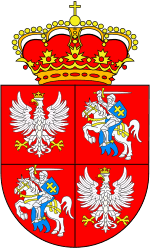 Herb Rzeczpospolitej Obojga Narodow
Herb Rzeczpospolitej Obojga Narodow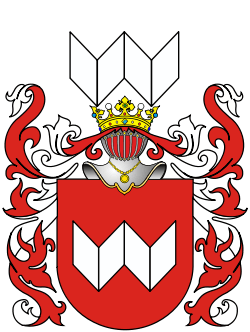 Herb Abdank (Awdaniec)
Herb Abdank (Awdaniec)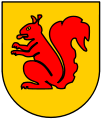 Herb Achinger
Herb Achinger Herb Aksak
Herb Aksak Herb Alabanda
Herb Alabanda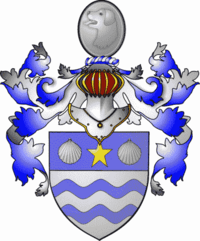 Herb Allan
Herb Allan Herb Amadej
Herb Amadej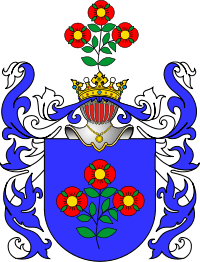 Herb Antoniewicz
Herb Antoniewicz Herb Azulewicz
Herb Azulewicz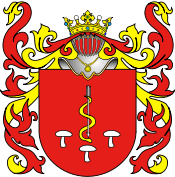 Herb Bajbuza
Herb Bajbuza Herb Bawola-Głowa
Herb Bawola-Głowa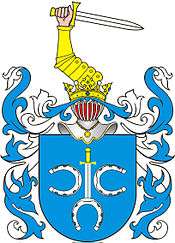 Herb Belina
Herb Belina Herb Bełty
Herb Bełty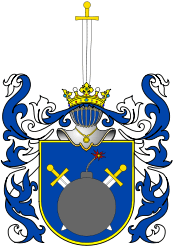 Herb Beztrwogi
Herb Beztrwogi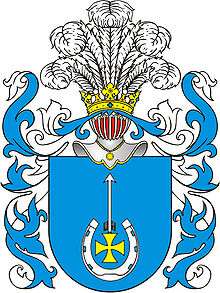
 Herb Biberstein
Herb Biberstein Herb Boenisch
Herb Boenisch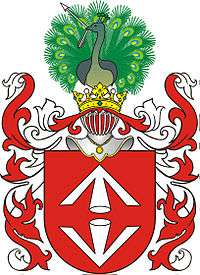 Herb Bogorya (Bogoria)
Herb Bogorya (Bogoria) Herb Bogoria, odmiana II
Herb Bogoria, odmiana II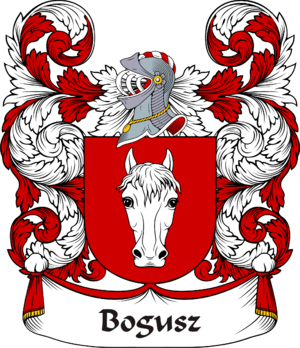 Herb Bogusz
Herb Bogusz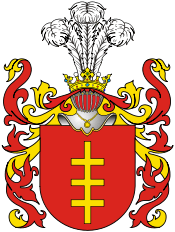 Herb Bojcza
Herb Bojcza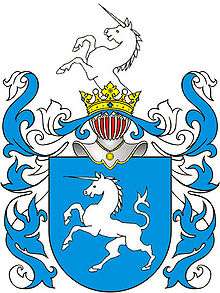 Herb Boncza
Herb Boncza Herb Borch (Trzy-Kawki, Trzy-Kruki)
Herb Borch (Trzy-Kawki, Trzy-Kruki) Herb Boreyko
Herb Boreyko Herb Bożawola
Herb Bożawola- Herb Brama
- Herb Brochwicz
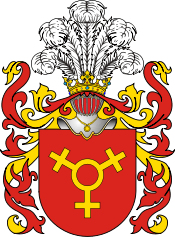
 Herb Bronic
Herb Bronic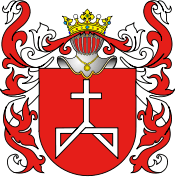 Herb Brzuska
Herb Brzuska Herb Chalecki
Herb Chalecki Herb Charyton
Herb Charyton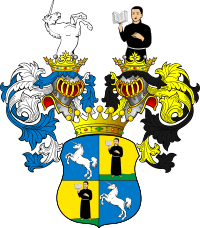 Herb Chłędowski
Herb Chłędowski- Herb Chodkiewicz
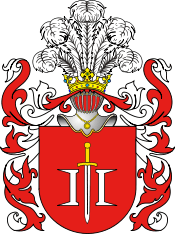 Herb Cholewa
Herb Cholewa Herb Choryński
Herb Choryński Herb Cielątkowa
Herb Cielątkowa Herb Cieleski
Herb Cieleski Herb Ciężosił
Herb Ciężosił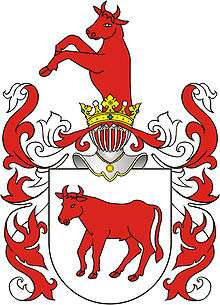 Herb Ciołek
Herb Ciołek Herb Czartoryski (Pogoń Litewska odmiana)
Herb Czartoryski (Pogoń Litewska odmiana) Herb Czewoja
Herb Czewoja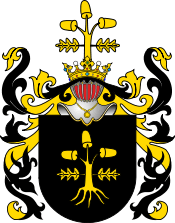 Herb Dąb
Herb Dąb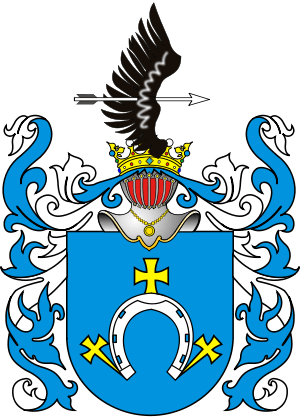 Herb Dąbrowa
Herb Dąbrowa- Herb Dąbrowski (Dołęga odmiana)
 Herb Dębno
Herb Dębno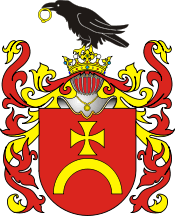 Herb Deszpot
Herb Deszpot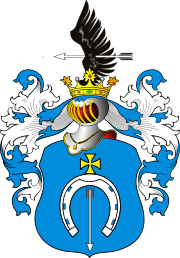 Herb Dołęga
Herb Dołęga Herb Doliwa
Herb Doliwa- Herb Drogosław
- Herb Druck
- Herb Drużyna
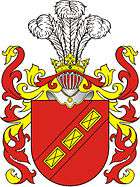 Herb Drya
Herb Drya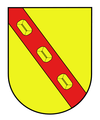 Herb Drya IV
Herb Drya IV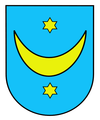 Herb Drzewica
Herb Drzewica Herb Działosza
Herb Działosza- Herb Dzik
 Herb Erbs
Herb Erbs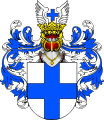 Herb Essen
Herb Essen Herb Estken
Herb Estken Herb Felseis
Herb Felseis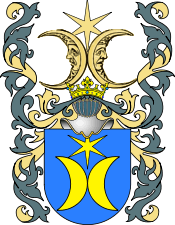 Herb Finke
Herb Finke Herb Fleming
Herb Fleming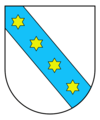 Herb Fogelfeder
Herb Fogelfeder Herb Fornalski
Herb Fornalski Herb Fornalski (Orlica odm.)
Herb Fornalski (Orlica odm.) Herb Giejszt
Herb Giejszt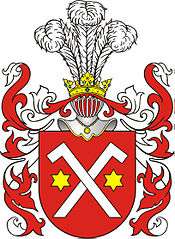 Herb Giejsztor
Herb Giejsztor- Herb Giełgud
- Herb Gierałt
 Herb Ginwiłł
Herb Ginwiłł Herb Glinski
Herb Glinski Herb Godziemba
Herb Godziemba Herb Gozdawa
Herb Gozdawa Herb Gozdawa
Herb Gozdawa Herb Grabie
Herb Grabie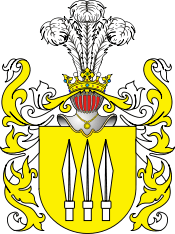 Herb Groty
Herb Groty Herb Gryf
Herb Gryf Herb Grzymała
Herb Grzymała- Herb Gutak
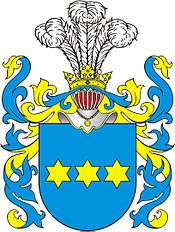 Herb Gwiazdy
Herb Gwiazdy Herb Gwiaździcz
Herb Gwiaździcz Herb Hejking
Herb Hejking- Herb Hełm
 Herb Herburt
Herb Herburt Herb Hilchen
Herb Hilchen Herb Hilzen
Herb Hilzen Herb Hipocentaur
Herb Hipocentaur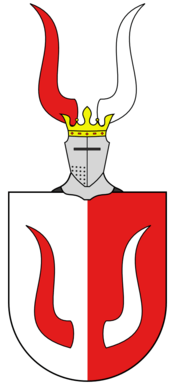 Herb Hodyc
Herb Hodyc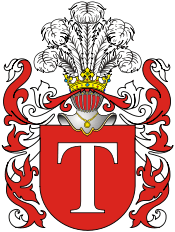 Herb Hołownia
Herb Hołownia Herb Hołownia II
Herb Hołownia II Herb Hornowski
Herb Hornowski Herb Hozyusz
Herb Hozyusz Herb Husarzewski
Herb Husarzewski Herb Hutor
Herb Hutor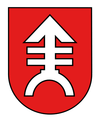 Herb Jakimowicz
Herb Jakimowicz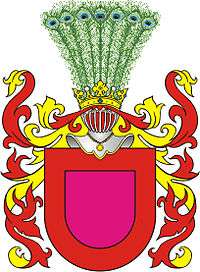 Herb Janina
Herb Janina Herb Jasieńczyk
Herb Jasieńczyk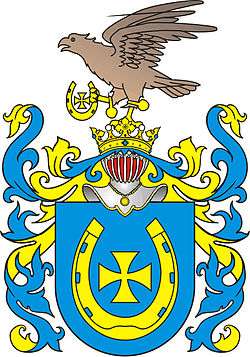 Herb Jastrzębiec
Herb Jastrzębiec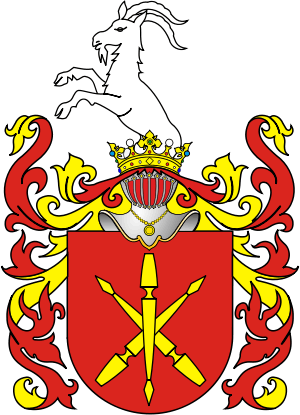 Herb Jelita (Koźlarogi, Koźlerogi, Nagody)
Herb Jelita (Koźlarogi, Koźlerogi, Nagody) Herb Jeż
Herb Jeż Herb Jodzieszko
Herb Jodzieszko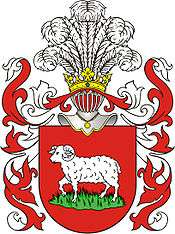 Herb Junosza
Herb Junosza- Herb Kalinowa
 Herb Karęga
Herb Karęga Herb Karnicki I
Herb Karnicki I Herb Karnicki II
Herb Karnicki II Herb Karp
Herb Karp Herb Kierdeja
Herb Kierdeja Herb Klamry
Herb Klamry Herb Komar
Herb Komar Herb Kopacz
Herb Kopacz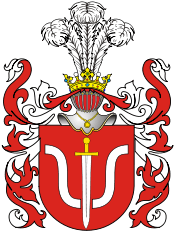 Herb Kopaszyna
Herb Kopaszyna Herb Korab
Herb Korab Herb Korczak
Herb Korczak Herb Korczyk
Herb Korczyk Herb Kordysz
Herb Kordysz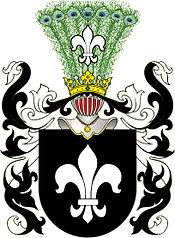 Herb Korsak
Herb Korsak Herb Korwin (Ślepowron odmiana)
Herb Korwin (Ślepowron odmiana) Herb Korybut
Herb Korybut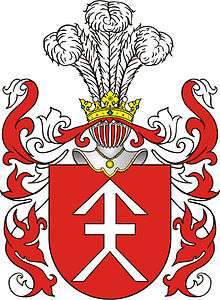 Herb Kościesza
Herb Kościesza Herb Kostrowiec I
Herb Kostrowiec I Herb Kostrowiec II
Herb Kostrowiec II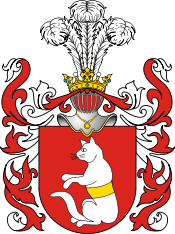 Herb Kot-Morski
Herb Kot-Morski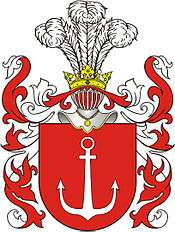 Herb Kotwica
Herb Kotwica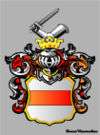 Herb Kotwicz
Herb Kotwicz Herb Kownia
Herb Kownia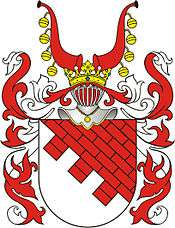 Herb Kozłowski
Herb Kozłowski Herb Kronwald
Herb Kronwald Herb Kruzer
Herb Kruzer Herb Kryszpin
Herb Kryszpin Herb Krzywda
Herb Krzywda Herb Księżyc
Herb Księżyc Herb Kujk
Herb Kujk Herb Kulikowski
Herb Kulikowski Herb Kułak
Herb Kułak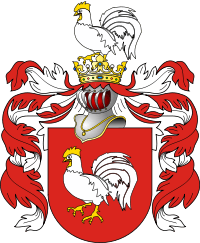 Herb Kur
Herb Kur Herb Kur II
Herb Kur II Herb Kusza
Herb Kusza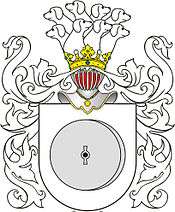 Herb Kuszaba
Herb Kuszaba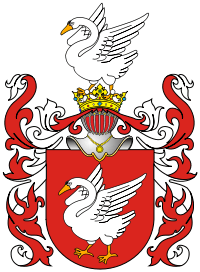 Herb Łabędź
Herb Łabędź Herb Lachnicki
Herb Lachnicki Herb Larysza
Herb Larysza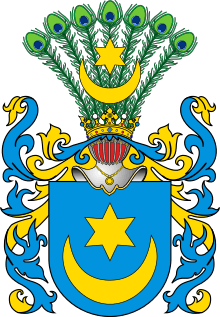 Herb Leliwa
Herb Leliwa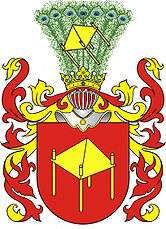 Herb Leszczyc
Herb Leszczyc Herb Lis
Herb Lis Herb Łodzia
Herb Łodzia Herb Lubicz
Herb Lubicz Herb Łuk
Herb Łuk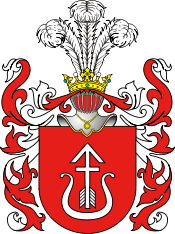 Herb Mądrostki
Herb Mądrostki Herb Masalski ks. III
Herb Masalski ks. III Herb Miller
Herb Miller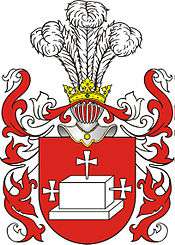 Herb Mogiła
Herb Mogiła Herb Nabram
Herb Nabram Herb Nałęcz
Herb Nałęcz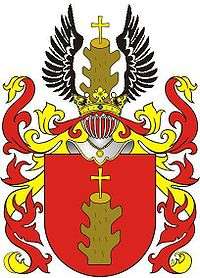 Herb Nieczuja
Herb Nieczuja Herb Niesobia
Herb Niesobia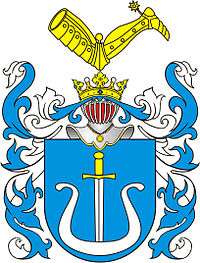 Herb Nowina
Herb Nowina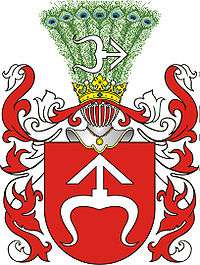 Herb Odrowąż
Herb Odrowąż Herb Odwaga
Herb Odwaga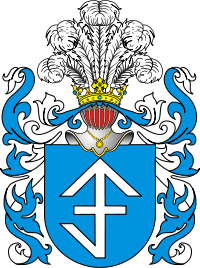 Herb Odyniec
Herb Odyniec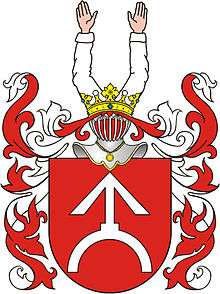 Herb Ogończyk
Herb Ogończyk Herb Oksza
Herb Oksza Herb Orda
Herb Orda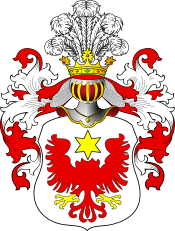 Herb Orla
Herb Orla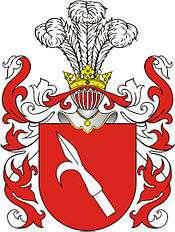 Herb Osek
Herb Osek Herb Ossorya
Herb Ossorya Herb Ostoja
Herb Ostoja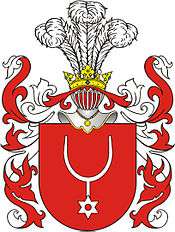 Herb Ostroga
Herb Ostroga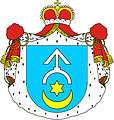 Herb Ostrogski
Herb Ostrogski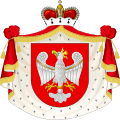 Herb Piastów
Herb Piastów Herb Pierzchała
Herb Pierzchała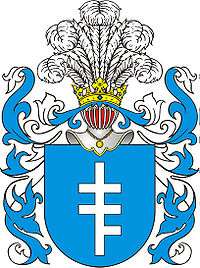 Herb Pilawa
Herb Pilawa- Herb Piłsudski
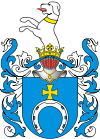 Herb Pobóg
Herb Pobóg Herb Pogoń Litewska
Herb Pogoń Litewska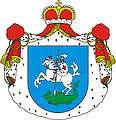 Herb Pogoń Ruska
Herb Pogoń Ruska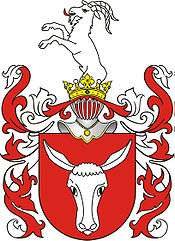 Herb Półkozic
Herb Półkozic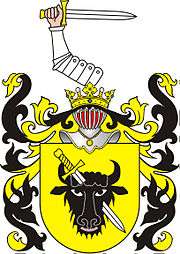 Herb Pomian
Herb Pomian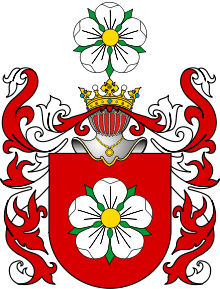 Herb Poraj
Herb Poraj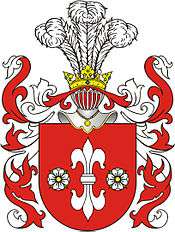 Herb Poronia
Herb Poronia Herb Pół Orła
Herb Pół Orła- Herb Późniak
 Herb Prus I
Herb Prus I Herb Pus II (Wilczekosy)
Herb Pus II (Wilczekosy)
 Herb Przegonia
Herb Przegonia Herb Przerowa
Herb Przerowa Herb Przyjaciel
Herb Przyjaciel Herb Puchała
Herb Puchała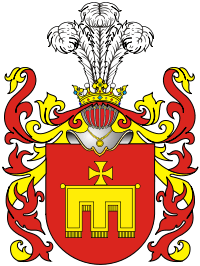 Herb Radwan
Herb Radwan Herb Radzislaw
Herb Radzislaw- Herb Radziwiłł (Trąby odmiana)
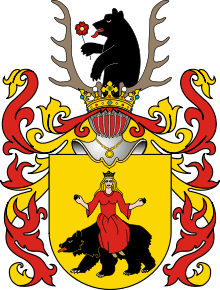 Herb Rawicz
Herb Rawicz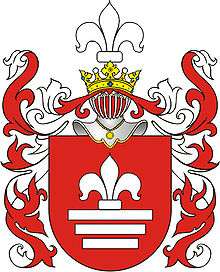 Herb Roch III
Herb Roch III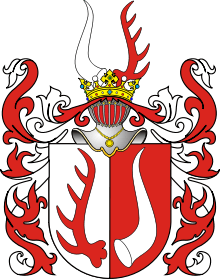 Herb Rogala
Herb Rogala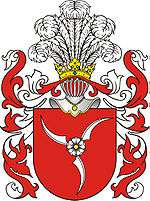 Herb Rola
Herb Rola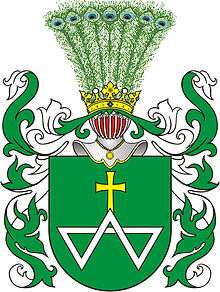 Herb Rozmiar
Herb Rozmiar Herb Samson
Herb Samson.png) Herb Sapieha (Lis odmiana)
Herb Sapieha (Lis odmiana) Herb Sas
Herb Sas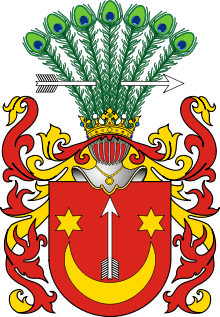 Sas II
Sas II Herb Siekierz
Herb Siekierz Herb Skarbomierz
Herb Skarbomierz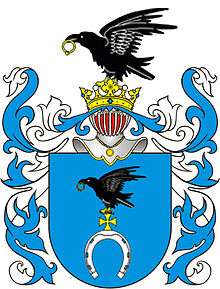 Herb Ślepowron (Bujno, Korwin)
Herb Ślepowron (Bujno, Korwin) Herb Sołtyk
Herb Sołtyk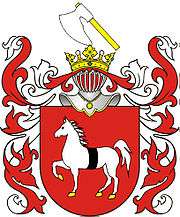 Herb Starykoń
Herb Starykoń Herb Straszyński
Herb Straszyński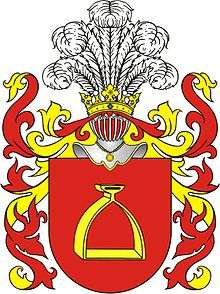 Herb Strzemię
Herb Strzemię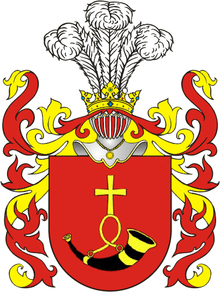 Herb Suchekomnaty
Herb Suchekomnaty Herb Sulima
Herb Sulima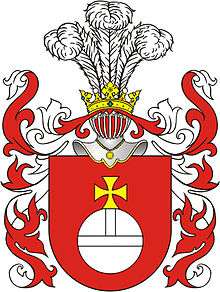 Herb Świąt
Herb Świąt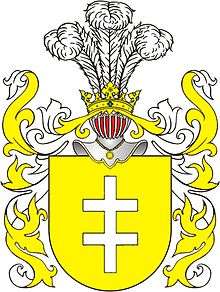 Herb Świeńczyc
Herb Świeńczyc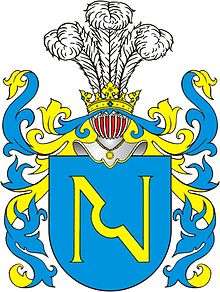 Herb Świerczek
Herb Świerczek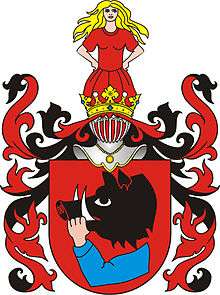 Herb Świnka
Herb Świnka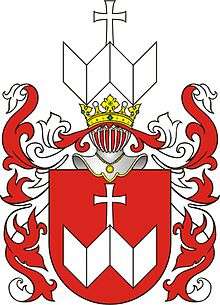 Herb Syrokomla
Herb Syrokomla Herb Szeliga
Herb Szeliga- Herb Szembek
 Herb Szreniawa
Herb Szreniawa Herb Tarnawa
Herb Tarnawa Herb Tępa-Podkowa
Herb Tępa-Podkowa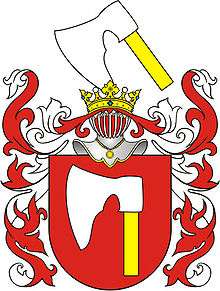 Herb Topór
Herb Topór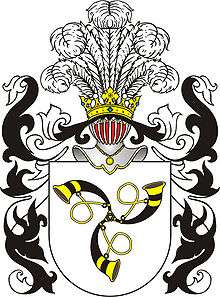 Herb Trąby
Herb Trąby Herb Trestka
Herb Trestka Herb Trójstrzał
Herb Trójstrzał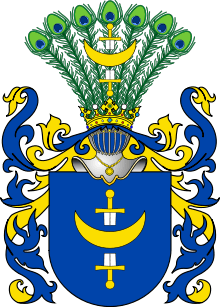 Herb Trzaska
Herb Trzaska Herb Trzy-Gwiazdy
Herb Trzy-Gwiazdy Herb Trzywdar
Herb Trzywdar Herb Wadwicz
Herb Wadwicz Herb Waga
Herb Waga Herb Warnia
Herb Warnia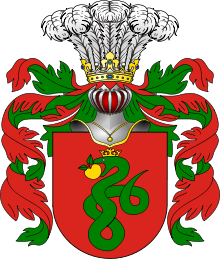 Herb Wąż
Herb Wąż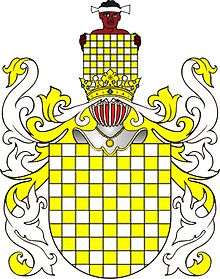 Herb Wczele
Herb Wczele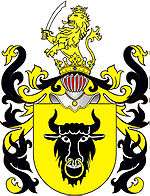 Herb Wieniawa
Herb Wieniawa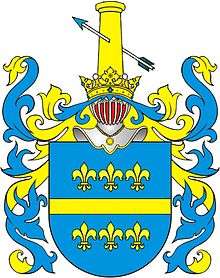 Herb Wierzbna
Herb Wierzbna Herb Wilcza-Głowa
Herb Wilcza-Głowa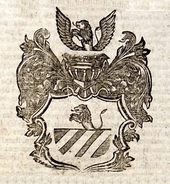 Herb Wolf
Herb Wolf Herb Wysocki
Herb Wysocki Herb Wyssogota
Herb Wyssogota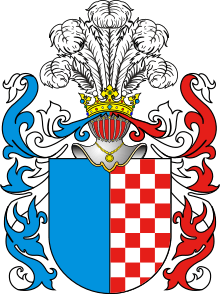 Herb Zabawa
Herb Zabawa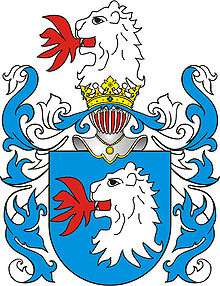 Herb Zadora
Herb Zadora Herb Zagłoba
Herb Zagłoba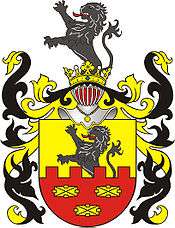 Herb Zaremba
Herb Zaremba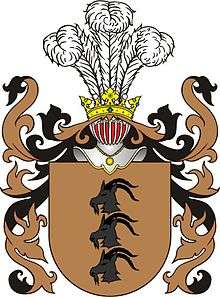 Herb Zerwikaptur
Herb Zerwikaptur Herb Zetynian
Herb Zetynian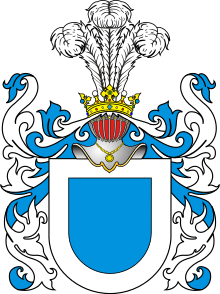 Herb Zgraja (Janina odmiana)
Herb Zgraja (Janina odmiana)
Images of some Personal coat of arms
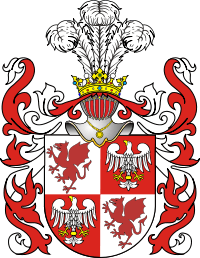 Duke of Masovia Janusz I of Warsaw (c.1340 – 1429)
Duke of Masovia Janusz I of Warsaw (c.1340 – 1429)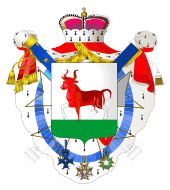 Prince Józef Antoni Poniatowski coat of arms as Marshal of France
Prince Józef Antoni Poniatowski coat of arms as Marshal of France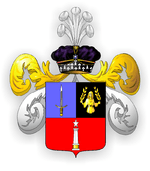 Alexandre Joseph Count Colonna-Walewski coat of arms of the French empire
Alexandre Joseph Count Colonna-Walewski coat of arms of the French empire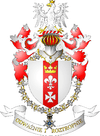 Lech Wałęsa personal granted coat of arms by the Kingdom of Sweden
Lech Wałęsa personal granted coat of arms by the Kingdom of Sweden
See also
| Wikimedia Commons has media related to Coats of arms of families of Poland. |
- Coat of arms
- Heraldry
- History of Poland
- List of Polish coats of arms
- Szlachta
- Polish name
- Polish clans
Further reading
- Tadeusz Gajl, "Herby szlacheckie Rzeczypospolitej Obojga Narodow", Gdansk, 2003
- Polish Coats of Arms listing (Polish)
- Armorial
References
- Górecki, Piotr (1992), Economy, Society, and Lordship in Medieval Poland: 1100-1250, New York, NEW YORK: Holmes and Meier Publishers, Inc., ISBN 0-8419-1318-8, OCLC 25787903

